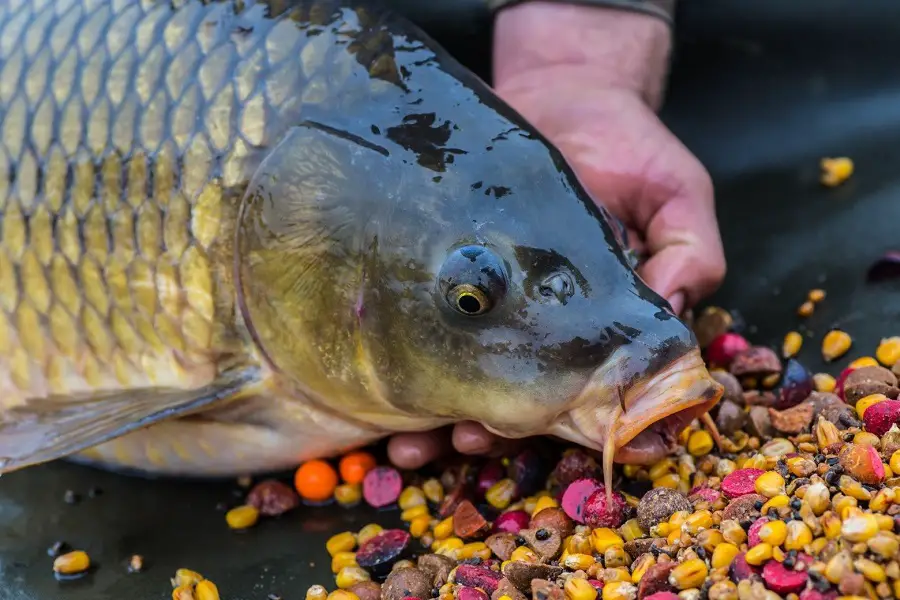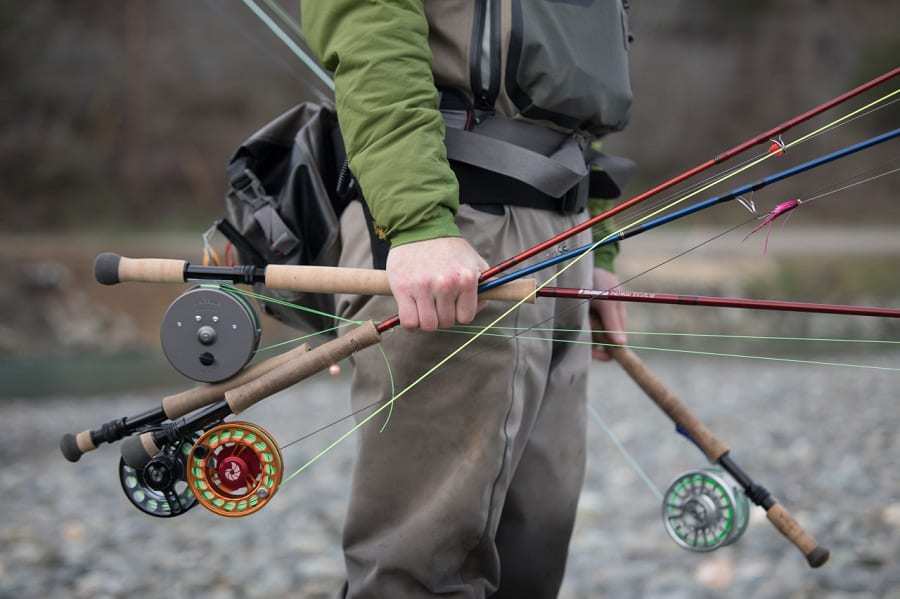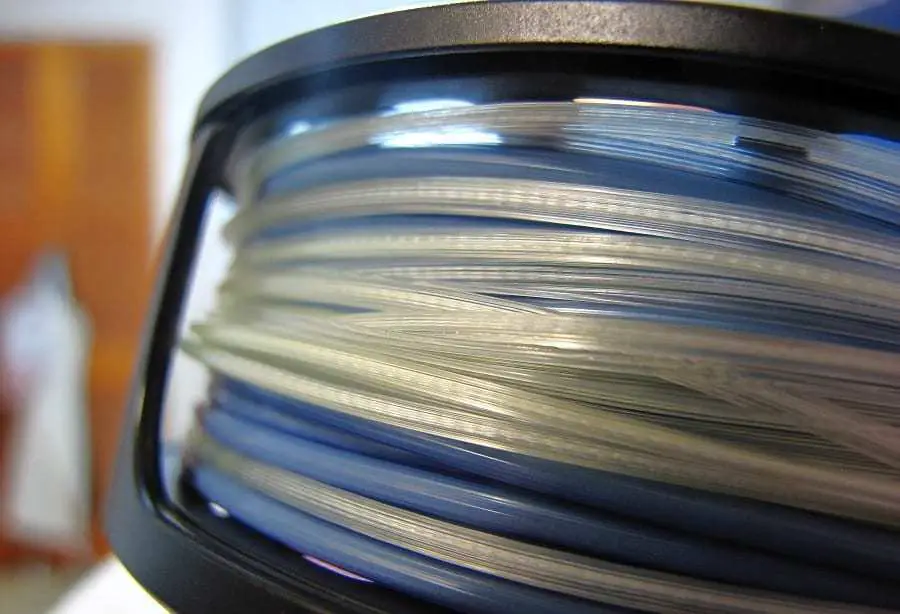If you’re an avid fisher, then you’ve probably caught a carp in your time. Most of the time, anglers will throw carp back into the water, as they’re unsure if you can actually eat the fish.
If you’re wondering whether or not you can eat it, the short answer is that you can.
Carp is a delicacy all across the world, but in the United States the carp has been vilified and is known as an unappetising fish.
But don’t let the carp’s tainted reputation put you off from trying it yourself. When prepared right, carp is actually quite delicious and has numerous nutritional and health benefits.
Here’s everything you need to know about carp, including how to prepare and cook it if you’re bold enough to try it for yourself!
Are Carp Good to Eat?
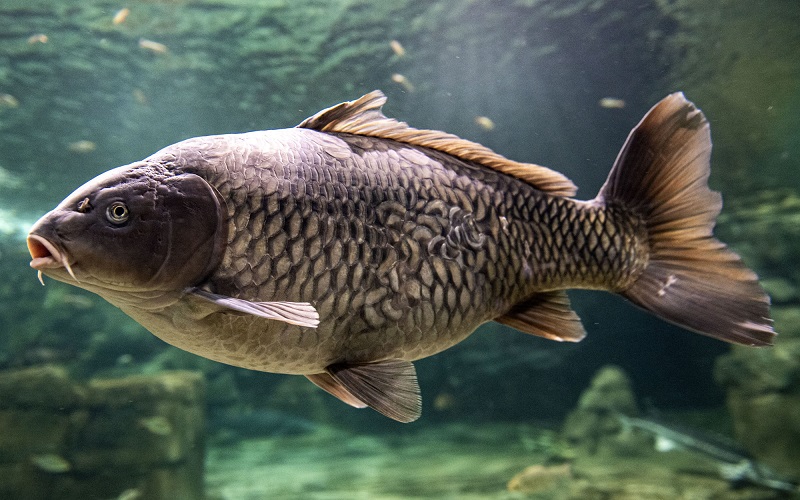
Carp are a species of large freshwater fish that are native to Asia and some parts of Europe. Over the years carp have been introduced and naturalized across most of the globe.
They’re large-muscled and big-lipped members of the minnow family, which were first introduced to the U.S. in 1872.
Carp are prolific breeders, and their hardy nature means that they’re capable of living in a variety of ecosystems.
Because of this, there’s quite a large population of them in the U.S., especially on the eastern coast. Unfortunately, in the United States they’re considered to have very little food value and sporting value.
However, carp don’t have the same reputation globally. In Asia, carp is one of the primary sources of food, and in Europe, they’re a highly sought after sport fish.
There are also a number of European recipes that are centred around carp.
There are plenty of delicious recipes and ways to cook carp, you just need to know how to prepare and cook the carp. We’ll go into more detail later on about the taste of carp, and what it tastes similar to.
Global Reputation
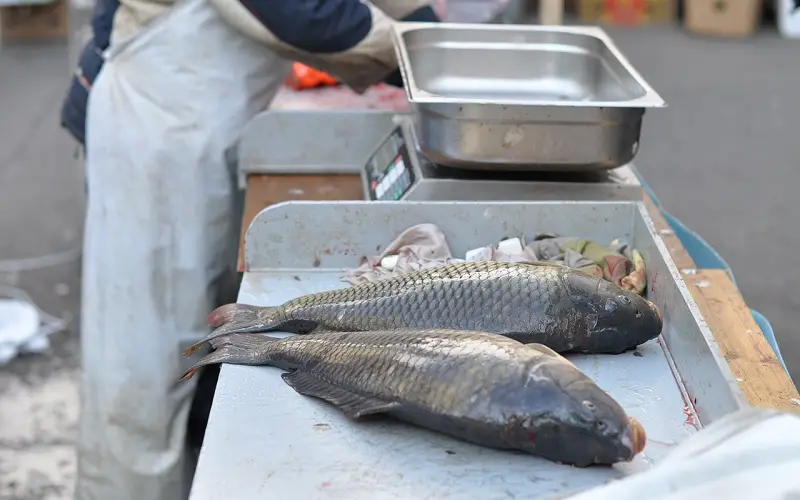
As we touched on previously, carp is found in different habitats across the world, and is actually the number one species for aquaculture. In terms of commercially produced carp, China accounts for up to 70% of the market. Across the world, both wild and farmed carp are consumed.
In Central and Eastern Europe, carp form the basis of traditional Christmas Eve dinners. So, what are some popular carp recipes?
In Hungary, a traditional dish known as the Fisherman’s Soup, contains carp, alongside a number of other freshwater fish species. This dish is commonly eaten on Christmas Eve. Similarly, in the Czech Republic, fried carp is a common Christmas holiday dish. A whole carp of the head is also used in thick soups alongside offal.
As carp is considered a delicacy in some parts of the world, why is it seen as inedible in the United States?
Where to Find Carp?
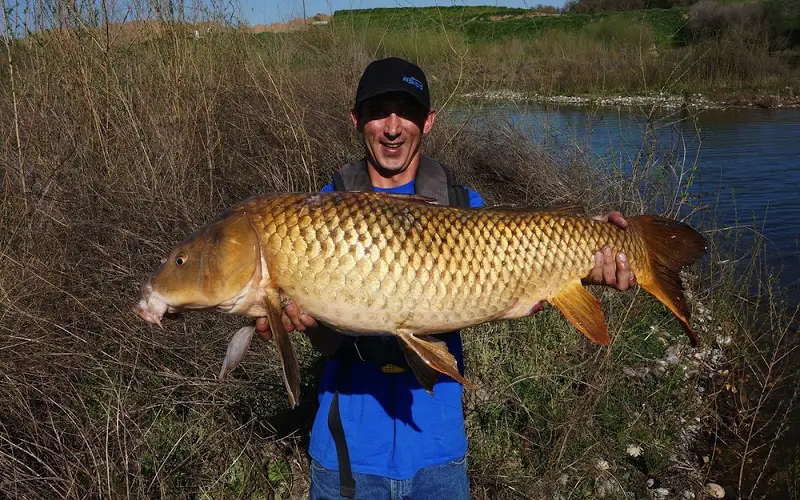
No matter where you go fishing in the U.S., you are very likely to come across a population of carp, especially in the eastern parts of the country.
There are a number of different carp species, and each of them has their own preference as far as habitat is concerned.
Most carp species are found in reservoirs as they are where they were first introduced as a form of vegetation control.
Because of this, it’s important that you check local regulations as some species of carp may be protected. They’re generally fair game however.
Some of the more popular spots in which you can find carp are in the outlying backwaters of most rivers. In Ohio, Mississippi, and Missouri, the rivers have a soaring carp population.
Similarly, some areas of Louisiana are so overrun with carp, that they are usually the only available species.
It is possible to find carp in most rivers, but they will usually congregate in much slower-moving channels. In general, carp prefer shallow waters to deeper pools, but this is of course dependent on each species and their personal preferences.
There’s also a population of common carp that like to live in the Great Lakes. The carp you can find here tend to be huge in size.
When it comes to western U.S., carp are sparsely populated, however, there are a lot of rivers in the Southwest that have breeding populations.
This includes the Rio Grande and Colorado rivers. When it comes to lakes, western lakes have a much lower carp population than their eastern counterparts, however, you will still be able to find some populations of carp – except for in the far north.
To summarize, most of the Eastern states have carp populations, and in big quantities. You’ll typically find the most carp around the Mississippi River and the lower Ohio and Missouri rivers.
A lot of reservoirs in these areas will also have substantial populations.
When it comes to habitats, carp can live and survive just about anywhere, but they do prefer bodies of water that have a soft bottom, are shallow, and are slow-moving.
Areas of backwaters are a great place to find carp.
What Does Carp Taste Like?
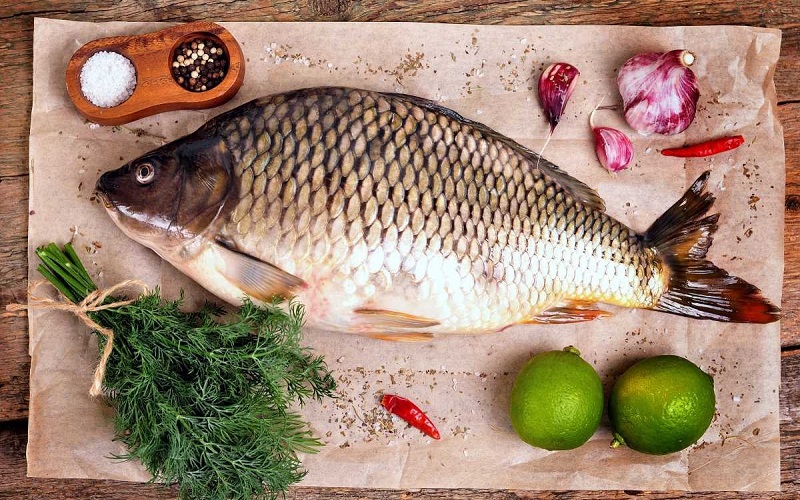
You’re probably most curious about what carp actually tastes like. If you ask anglers in the United States what carp tastes like, you’re bound to get a mixed response.
Most American anglers claim that carp has a “muddy” taste, even if they’ve never tried it themselves. In short, you may experience a muddy flavor from certain carp species, but if carp is prepared properly, you won’t experience that at all.
A book published back in the 17th Century actually referred to carp as the “Queen of the Rivers”, and there’s a good reason for it.
The right species of carp, taken from the right water, can be very delicious. In fact, it can even taste very similar to salmon.
Carp is a very oily fish. Although this can have an effect on the taste, it’s often it’s oiliness that is credited for giving it it’s “muddy” taste, but this not the case.
The muddy taste is actually a result of a stress reaction, which is commonly found with many sedate fish species.
The oily muscle of carp actually makes it the perfect fish to fry. If cooked correctly, carp meat should be flaky and moist, and it should have a very subtle flavor – so there shouldn’t be a muddy or even “fishy” taste to it.
The secret to getting carp to taste the way it should, is to put carp directly on ice or into ice and water as quickly as you can after a catch.
This will limit the blood flow to the rib meat – which is the meat cut we want to use – which will protect the flavor.
When you prepare carp, you need to also remove the bloodline, as you don’t want to cook that part of the meat. If cooked, that will introduce the bitter flavor of mud.
A second tip for getting carp to taste good is to make sure you get it from the cleanest water possible. As carp rely on vegetation for food, they are susceptible to pollution which will be reflected in the quality of the meat.
How to Prepare Carp

If carp wasn’t so delicious, it wouldn’t have been introduced all across the globe. Proper preparation of carp is universal, and the method was also passed alongside the carp.
It’s very important that you prepare carp properly to get the best taste.
Before you do anything, you must wash the carp clean of slime.
Some people like to descale their carp, but this can be a very rough process.
The best starting point is to skin your carp instead. As the scales and skin of carp are very tough, it’s best to use the point of the knife to get under the scales near the top of the tail.
From there you should be able to follow the backbone from the tail to skull which should loosen up the skin.
Next, make a cut along the belly which should loosen up the rest of the skin. Then, use a pair of pliers to slowly remove the skin. Use a knife to remove any skin that may still be hanging to the meat. This can be a very time-consuming task, but it is much faster than descaling, and the final product will be worth the effort.
Once the skin has been removed, you can start making the fillets. Start by going along the backbone to the belly and running your knife along the ribs.
As with other fish, you can remove the head and tail. With carp, you should easily be able to feel the ribs through the knife as they’re very thick.
When filleting carp, you want to try and keep as much of the back meat as you can, as this is the best part of the meat. Use a thin knife and run it as close to the backbone as you can.
The first few times you prepare carp may not be the best, and it can be a bit tricky to get to grips with. But with a bit of practice, it won’t be long before you improve the appearance of your fillets.
Whilst filleting, you will notice the bloodline. This is when you should remove it before you start cooking, as leaving it in will give the meat a muddy taste.
Just below the bloodline should be a small area which will contain Y bones – just like trout and salmon have.
If you attempt to remove these, it might limit the amount of meat you get for your fillet. If possible, try not to deal with the bones.
Once your fillets are prepared, you can either soak them in salt water, or you can put them back on ice. It’s worth noting that there is no benefit to soaking carp, as it will not change the flavor.
The key is to cook them fairly quickly after filleting, as this will eliminate the “fishy” flavor. Another key tip is to score the fillets about three-quarters of the way through the meat, as this will allow the heat and cooking oil to get inside.
How to Cook Carp?
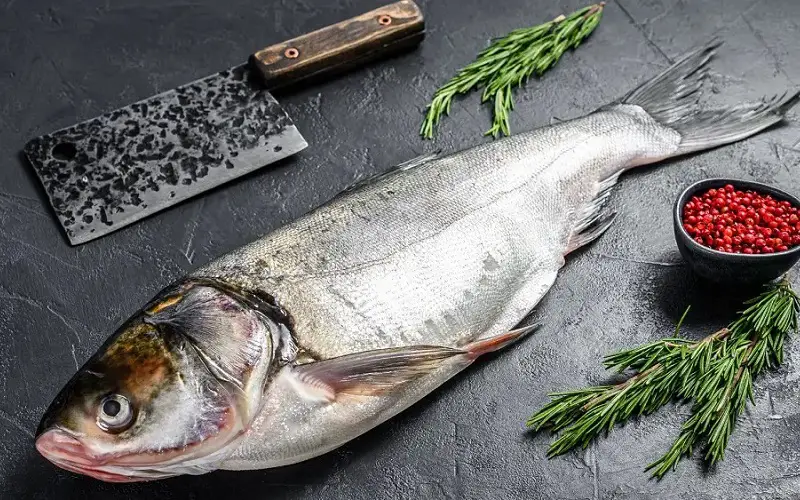
There are hundreds of different ways in which you can cook carp, thanks to the many different recipes. It’s probably best served after it’s been grilled, pan-fried, or deep-fried.
Also, thanks to its dense and durable flesh, carp fillets hold up well on the grill and in deep fryers. It has a pretty similar texture to salmon, so the easiest and most common carp cooking method is pan-fried.
Before pan-frying, many people prefer to bread carp first. As it’s naturally oily, you can bread the fillets pretty lightly. Just make sure the pan is deep and has a good amount of oil and butter inside.
You’ll also want to choose a breading that will cook at an even temperature and will brown up well.
You can also choose to bake carp, and the results are usually pretty good. Just make sure that you have proper heat control and you’re using the right temperatures.
Like other similar fish meats, carp is quite easy to overcook. You want the fish to still be moist.
As carp has a pretty delicate flavor, you don’t want to go overboard on the seasonings. In most cases, salt and pepper is enough.
Feel free to experiment however, seasonings such as garlic and cayenne pepper also work well with carp. Some people even choose to pickle carp. This can be achieved using a mixture of vinegar and herbs, such as rosemary.
What to Keep in Mind When You’re Eating Carp?
Although carp can be quite the delicacy, there are a few things you should keep in mind before you try them
Like most species of fish, the taste of carp depends on what they have been eating. Carp which has been taken from a muddy river bottom will taste like mud.
For the best-tasting carp, eat carp that has been eating clean vegetation, as it’s meat will taste mild and sweet.
Also, as we mentioned earlier, dealing with carp bones can be incredibly frustrating. The rib bones have several prongs, so trying to get rid of them can be a very time consuming task.
If you can eat around them, great! If you can’t, it’s going to take a lot of work to get rid of them.
An easier way to deal with the bones is to use your fingers to tear off chunks whilst you’re preparing the fish. If you do this, you can then fry those pieces in the batter.
It might look slightly odd, but it will be much easier to eat and will also have a great taste.
Can You Eat Carp? Yes!
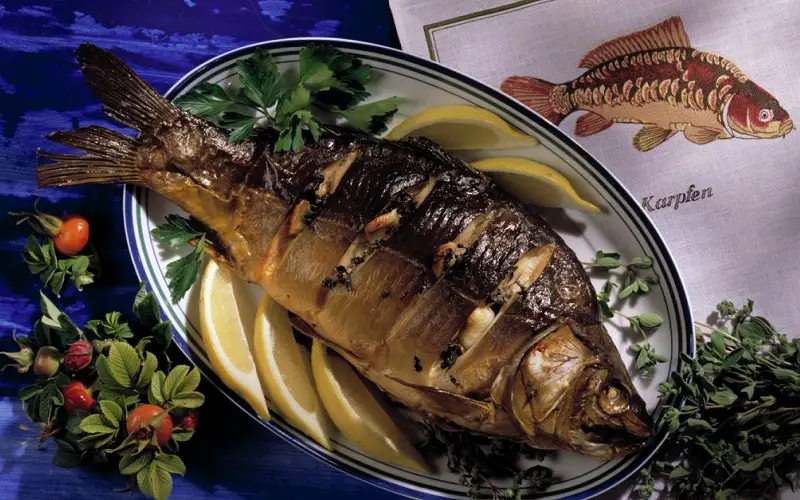
If you’re a fan of bland white fish, such as walleye, or more flavorful fish such as salmon, then carp can be a great fish species to try. Try to ignore the rumors that surround carp, and that they’re not great for eating.
Just like most fish, the taste of the carp depends on the waters they came from and the diet they were consuming.
So, people who say carp has a muddy taste either haven’t caught it in a clean area, or haven’t prepared it properly.
For example, if you eat carp which was caught in a polluted part of the Mississippi River, then it’s going to taste absolutely awful – just like if you caught a walleye from the same area.
A fish only tastes as good as its surroundings, so make sure the carp you consume is from a clean body of water.
Despite all of the bad press that carp gets Stateside, it is actually quite delicious if it’s cooked and prepared properly. If carp didn’t taste good, it wouldn’t be a delicacy across different parts of the world.
As a very versatile fish, carp can be found just about everywhere, so you don’t have to worry about being an expert angler to find them.
Depending on the species, carp can be found in several different places. They’re generally free to take, but in reservoirs is where you’re most likely to find they’re under restrictions.
Just make sure you check local regulations before you go hunting for carp.
If you’re eager to try out a new and unique fish, give carp a chance, and we can guarantee that you won’t be disappointed.
Frequently Asked Questions
Can you eat grass carp?
A lot of people think that they are unable to eat grass carp, as these fish are eating all the vegetation at the bottom of the water. Some people believe that because of their diet, this species of carp won’t taste very good.
As we mentioned previously, diet can play a big part in how a fish tastes. As long as the carp is caught in non-polluted and clean waters, and it has been prepared properly, the carp should taste delicious.
Grass carp are typically found in the Mississippi River, and as they have a very high population, a lot of anglers are targeting carp as more than just trophy fish, as they’re gaining popularity as a tasty fish to consume.
References:


